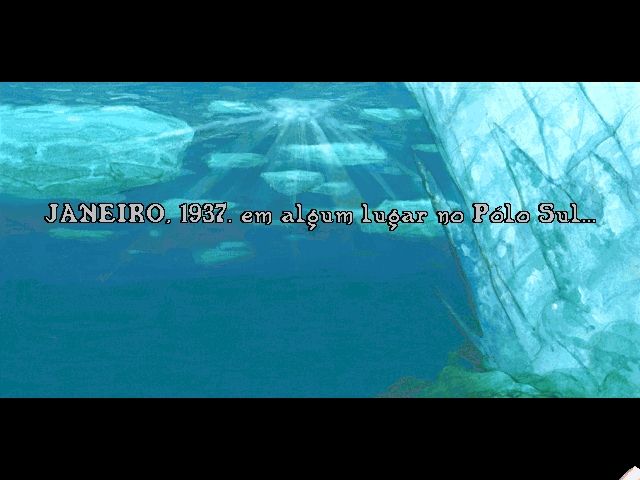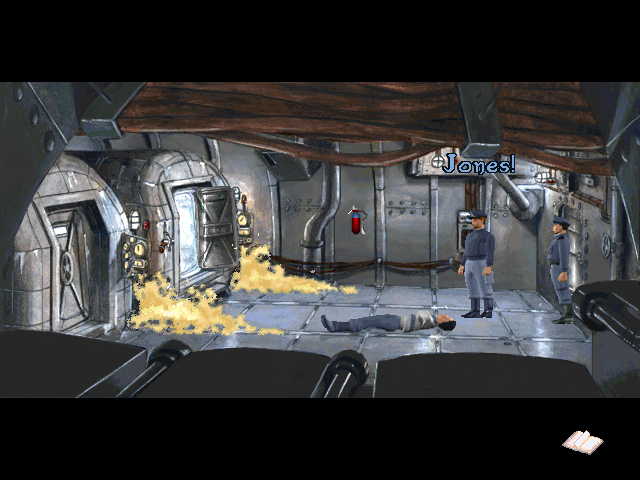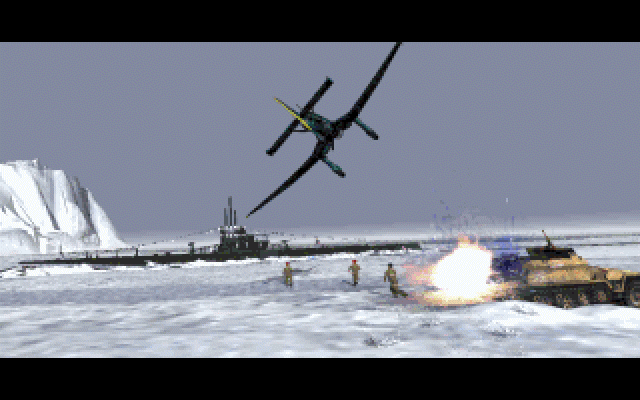Retro Replay Review
Gameplay
Prisoner of Ice adopts a streamlined point-and-click interface that keeps the focus squarely on unraveling its mysteries. With a left-click to interact and a right-click to examine, the control scheme is instantly accessible to newcomers and genre veterans alike. This simplicity, however, belies a careful design that ensures every action feels purposeful. The puzzles are woven organically into the environment, leveraging your submarine setting to deliver challenges that range from decoding cryptic messages to repairing failing systems under duress.
(HEY YOU!! We hope you enjoy! We try not to run ads. So basically, this is a very expensive hobby running this site. Please consider joining us for updates, forums, and more. Network w/ us to make some cash or friends while retro gaming, and you can win some free retro games for posting. Okay, carry on 👍)
The game’s pacing balances moments of tense exploration with sudden jolts of terror. Trapped aboard the H.M.S. Victoria, you move from claustrophobic corridors to perilous engine rooms, always aware that a monstrous threat could emerge at any moment. Inventory management feels intuitive; you’ll frequently combine found items to solve environmental riddles, and the limited number of usable objects heightens the sense of resource scarcity. This design choice amplifies the horror, as you must think twice before using critical items in life-or-death situations.
One of the most compelling aspects of Prisoner of Ice is how it uses sound cues to influence gameplay. The creaking hull, distant groans, and muffled screams create an auditory tapestry that heightens tension. Certain sequences demand quick reflexes—ducking behind bulkheads, avoiding tentacled fiends, or shutting off steam valves before they scald you alive. While these action segments are brief, they provide a welcome change of pace and reinforce the stakes of every decision.
Though straightforward by today’s standards, the interaction system occasionally feels restrictive. There are moments when clicking feels more like trial and error—you might try to use an object in nearly every hotspot until the game acknowledges the correct action. Still, this design was common in late ’90s adventures and can even enhance immersion by encouraging thorough examination of your surroundings. Overall, the gameplay remains engaging, with enough variety to prevent monotony while maintaining the oppressive atmosphere essential to a Lovecraftian tale.
Graphics
For its time, Prisoner of Ice delivers atmospheric visuals that effectively capture the desolation of the Antarctic and the aged, metal confines of a military submarine. The backgrounds are richly detailed, from frost-laden bulkheads to dimly lit engine rooms. Despite the limitations of 256-color palettes, each scene feels meticulously crafted to evoke unease and isolation. Occasional animated elements—such as dripping water or swaying cables—bring static screens to life and reinforce the ship’s precarious state.
The creature designs stand out as some of the game’s most memorable assets. When the monstrous cargo first reveals itself, its writhing tentacles and gaping maws are depicted in enough detail to unsettle players without relying on modern-day gore effects. These monster encounters are paced sparingly, making each appearance impactful. The sense of dread that accompanies glimpsing these aberrations is a testament to the art direction, which prioritizes suggestion and shadow over explicit depiction.
Cutscenes and character portraits employ a slightly higher resolution, lending the narrative moments a more cinematic feel. Lt. Ryan’s gruff expressions and the terrified faces of his crewmates are conveyed with clear, expressive sprites. While animation frames are minimal, they’re used judiciously to illustrate key story beats—gunfire flashes, hatch doors slamming shut, and characters reacting to unseen horrors. This economy of movement doesn’t detract from immersion; rather, it echoes the resource constraints of a sinking vessel.
Lighting and color choices play a crucial role in mood-setting. Dark greens and blues dominate the submarine interiors, evoking the cold, secretive underbelly of the ocean. Occasional reds and yellows light up control panels or emergency alerts, guiding the player’s eye to critical elements. Although modern gamers might find the pixel density dated, the game’s visual style has aged with a charm that underlines its Lovecraftian roots and amplifies the feeling of being trapped in an unholy experiment.
Story
Prisoner of Ice weaves a narrative steeped in H. P. Lovecraft’s signature themes: forbidden knowledge, cosmic monstrosities, and the fragility of sanity. You assume the role of Lt. Ryan, an American officer aboard H.M.S. Victoria, tasked with a seemingly routine rescue mission in the Antarctic. When your crew inadvertently unearths two mysterious crates beneath the ice, the storyline quickly darkens. The gradual realization that these crates harbor an eldritch terror creates a mounting sense of dread that permeates every corridor.
The plot unfolds through a mix of in-game dialogue, environmental storytelling, and brief cutscenes. Conversations with your crewmates reveal personal motivations and fears, grounding the supernatural horror in relatable human conflict. As Ryan, you must navigate both the external threat of the monstrous cargo and the internal tensions brewing among the submarine’s officers. This duality—man versus monster, man versus man—adds layers of complexity to what could otherwise be a straightforward “escape or die” scenario.
The Antarctic backdrop contributes significantly to the narrative’s isolation motif. Endless ice fields and blizzard conditions render outside rescue impossible, trapping you in a submerged coffin while the unknown stalks your every step. A series of eerie radio transmissions and recovered logs hint at prior expeditions that met gruesome fates, amplifying the sense that you’re repeating a cycle of catastrophe. The story’s pacing is deliberate; exposition is doled out in measured increments, encouraging players to piece together the larger mythos at their own pace.
By the time the final revelations surface—tying the Antarctic mysteries to a broader cosmic conspiracy—you’re fully invested in both the fate of Lt. Ryan and the enigmatic forces at play. Though certain plot twists may feel familiar to Lovecraft enthusiasts, the submarine setting offers a fresh spin on classic horror tropes. The narrative closes with ambiguous overtones, leaving room for interpretation and giving players something to ponder long after the credits roll.
Overall Experience
Prisoner of Ice strikes a satisfying balance between accessible gameplay and atmospheric horror. Its straightforward interface ensures you spend more time immersed in the story than wrestling with complex controls. While some modern players might find the puzzle solutions a bit opaque, the sense of discovery and achievement when overcoming each obstacle remains gratifying. The game’s brief action sequences provide just enough adrenaline to punctuate the slower investigative segments.
The audiovisual presentation excels at fostering tension. Haunted ambient soundscapes, terse musical cues, and well-placed creature reveals combine to create a pervasive sense of dread. Visually, the pixel art retains a nostalgic allure and effectively communicates isolation, decay, and otherworldly menace without resorting to graphic violence. Even after two decades, the game’s art and sound continue to elicit genuine chills.
For fans of Lovecraftian horror or classic adventure games, Prisoner of Ice offers a compelling journey into the unknown. Its blend of submarine thriller and cosmic horror makes for a unique setting that stands apart from more conventional haunted-house adventures. The story is engaging, the environments are memorable, and the subtle narrative threads encourage multiple playthroughs to catch every hidden detail.
Ultimately, Prisoner of Ice may not boast cutting-edge graphics or overly ambitious mechanics, but it delivers a focused, well-crafted experience. Its strengths lie in atmosphere, storytelling, and the satisfaction of piecing together a terrifying mystery in real time. For those seeking a compact yet immersive horror adventure, this Infogrames classic remains a worthy voyage into the abyss.
 Retro Replay Retro Replay gaming reviews, news, emulation, geek stuff and more!
Retro Replay Retro Replay gaming reviews, news, emulation, geek stuff and more!









Reviews
There are no reviews yet.